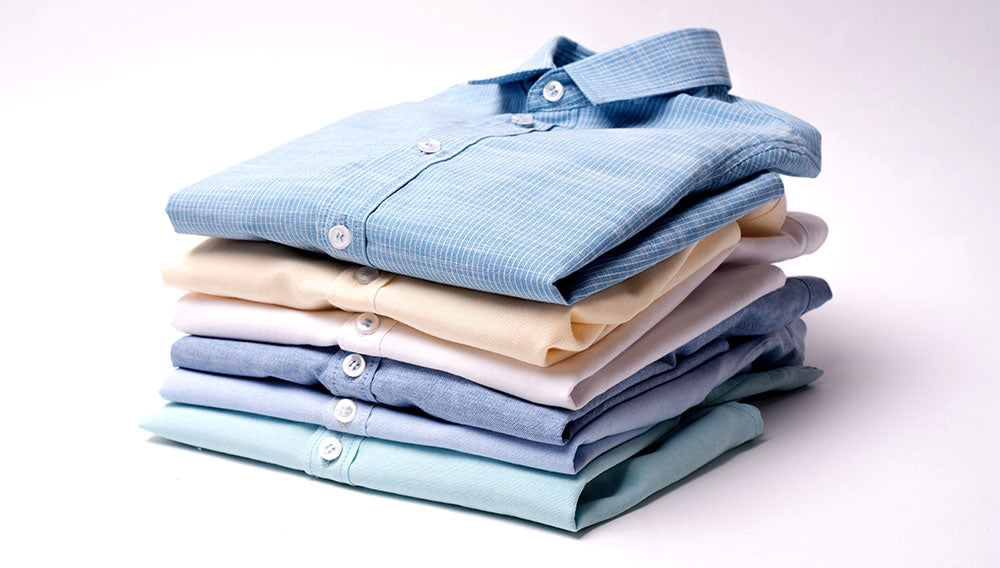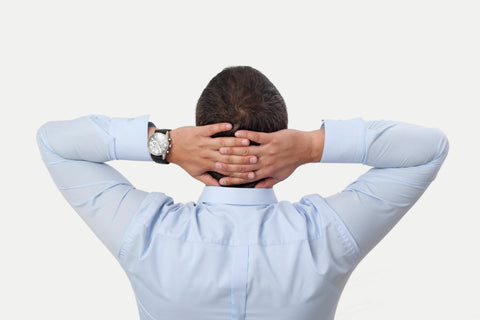Your Cart is Empty

Unless you’re hiking in Desert Valley and worried about intense dehydration, you don’t want sweat trapped in your clothes. Sweat is uncomfortably wet and often embarrassing. Sweaty clothes equal sweat marks, yellow stains, and the dreaded body odor.
One of the easiest ways to look and feel dry even when you’re sweating is to wear clothing made with sweat-wicking fabric. If you sweat, moisture-wicking fabrics can be a lifesaver! The best moisture wicking material uses capillary action to move sweat away from your body so it can evaporate and dry quickly.
In this article, we look at seven of the best moisture-wicking fabrics. These sweat-wicking materials work great for sweat management or fitness – whatever you need, they'll help pull sweat away from your skin, reducing discomfort, odor, and stains.
This post was originally published in December 2019, and was most recently updated in March 2021.

Let's first talk about the difference between sweat-wicking materials and breathable materials.
Sweat-wicking fabric pulls moisture away from your body, through the fabric so it can evaporate. This wicking action helps keep your body dry and cool, even during hot weather or while you’re sweating.
Meanwhile, breathable fabrics allow air to pass through it freely. As a result, any moisture that your body produces will evaporate faster. Not all breathable fabrics are equal though. For example, cotton, rayon, and linen are breathable but not great at wicking moisture away from the skin.
With that said, the best moisture-wicking fabric is one that is also breathable. In the next section, you’ll find some breathable moisture-wicking fabric types.
In the next section, we discuss the seven best moisture wicking fabric types, the pros and cons of each one, and their common uses.
Polyester, a synthetic blend, is a reliable moisture-wicking fabric. When blended with other materials, polyester is an ideal choice for active wear because it is breathable, lightweight and quick-drying.
However, it tends to retain odors and can even contribute to bacteria growth.
One of the easiest ways to look and feel dry even when you’re sweating is to wear clothing made with sweat-wicking fabrics
Polypropylene is a thermoplastic polymer like polyester. Aside from wicking moisture, polypropylene dries quickly and is highly regarded for its thermal properties, making it ideal to use for cold-weather gear and clothing. However, like polyester, it tends to retain odors. It’s also not as soft as other fabrics on the list.
Merino wool is one of the best moisture-wicking fabrics on the market today. It is a natural fiber that is breathable and lightweight, and highly suitable for warmer weather. Unlike polyester, it doesn’t retain odors. No longer just for sweaters, merino wool is now available in lightweight fabrics that are ideal as undershirts and active wear.
The only con to merino wool, one of the best moisture wicking materials? It is less durable than cotton and other synthetic fabrics.
Wool is a natural fiber that is a fantastic moisture-wicking material. It is heat-regulating, soft and warm, which makes it the perfect material for winter clothing. However, as we all know, wool is not as soft as merino wool and may irritate sensitive skin. It is also less durable than synthetic fabrics.

Nylon is moisture-wicking, resists mildew, and dries quickly. It is comfortable to wear because it is also stretchy and light, which makes it perfect for workout wear. You'll find a lot of fitness gear made of nylon (or with a high nylon ratio) for this reason.
Despite how good nylon is as a moisture wicking fabric, there are some definite cons. First, nylon may retain odors – not great if you're sweating a lot! Additionally, nylon's breathability depends on the size of the yarn or weave.
Micromodal is one of the most breathable sweat-wicking fabrics in use today. It has exceptional temperature-regulating properties so you can be comfortable in any weather. Because of its super soft, silk-like texture, it is ideal for underwear, loungewear, and any clothing close to the skin. This is part of why we use micromodal for some of our Ejis products.
However, micro modal can occasionally pill, which means it needs more particular care than other moisture wicking materials. And while micromodal fabric helps regulate body temperature, it doesn’t trap in heat and won’t keep you warm.
Like micromodal, bamboo is derived from plants, so its fibers are naturally wicking. It has a soft and cool texture, and it regulates body temperature well, so it is ideal for wearing year-round. However, bamboo moisture wicking fabric is more expensive than other natural fabrics, like cotton.
If you have hyperhidrosis or excessive situational sweating, there are many clothing options to help you manage. Sweat-wicking fabrics, anti-odor fabrics, breathable fabrics, and sweat absorbing clothing make living with sweat easier than ever.
Ejis has combined the power of all these technologies to create the best breathable, moisture-wicking, anti-odor, sweat proof micromodal undershirts and underwear on the market today. (Buy on our shop or on Amazon)

If you struggle with excessive sweating, you might want to try a natural approach before medical intervention. Try these home remedies for hyperhidrosis first!

